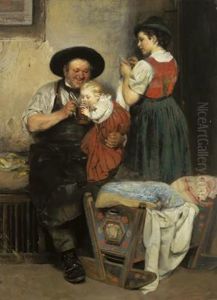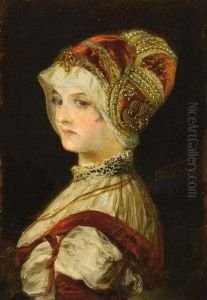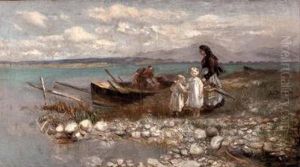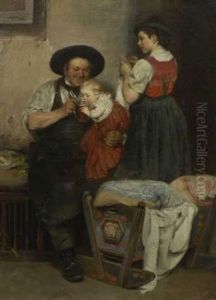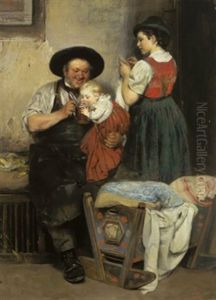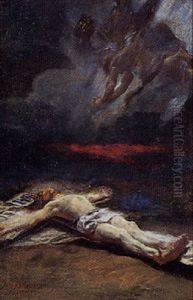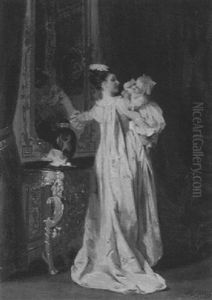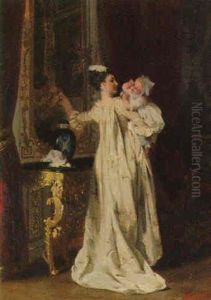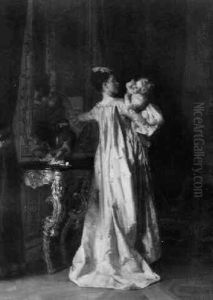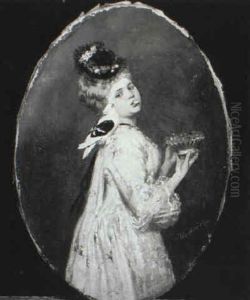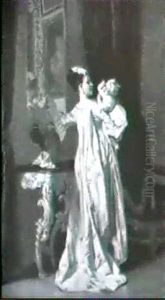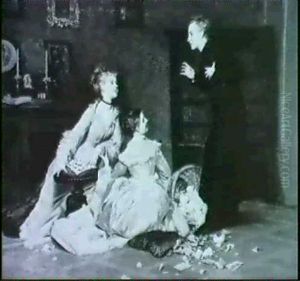Johann Caspar Herterich Paintings
Johann Caspar Herterich was a German painter born on September 23, 1853, in Lindau, which was then part of the Kingdom of Bavaria. He grew up in a time when the German states were experiencing significant political and cultural changes, which eventually led to the unification of Germany. Herterich came from an artistic family; his father, Simon Herterich, was also a painter, which likely influenced Johann's early interest in the arts.
Herterich studied at the Munich Academy of Fine Arts, which was a major center for art and culture in 19th-century Germany. There, he was a student of Wilhelm von Diez, a prominent artist and teacher who was known for his history paintings and influence on the younger generation of Munich painters. Herterich's education and training at the academy were instrumental in shaping his artistic style, which was characterized by a blend of Realism and the emerging Naturalist aesthetic.
Throughout his career, Herterich was well-regarded for his genre scenes, portraits, and historical paintings. He was particularly adept at capturing the nuances of light and color, and his works often featured lush, detailed backgrounds with a sense of romanticism. Herterich's art was well-received in his time, and he exhibited his works in various prestigious exhibitions, including those at the Munich Glaspalast, which was an important venue for contemporary art in the late 19th century.
In addition to his painting, Herterich served as a professor at the Munich Academy of Fine Arts, where he taught and influenced a new generation of artists. His role as an educator allowed him to impart his knowledge and skills to his students, thus continuing the tradition of artistic excellence for which the academy was known.
Johann Caspar Herterich passed away on January 14, 1905, in Munich. Though he may not be as widely known today as some of his contemporaries, his contributions to the Munich school of painting and his role as an educator have left a lasting impact on the history of German art. His works can still be seen in various art collections and museums, where they continue to be appreciated for their beauty and historical value.
